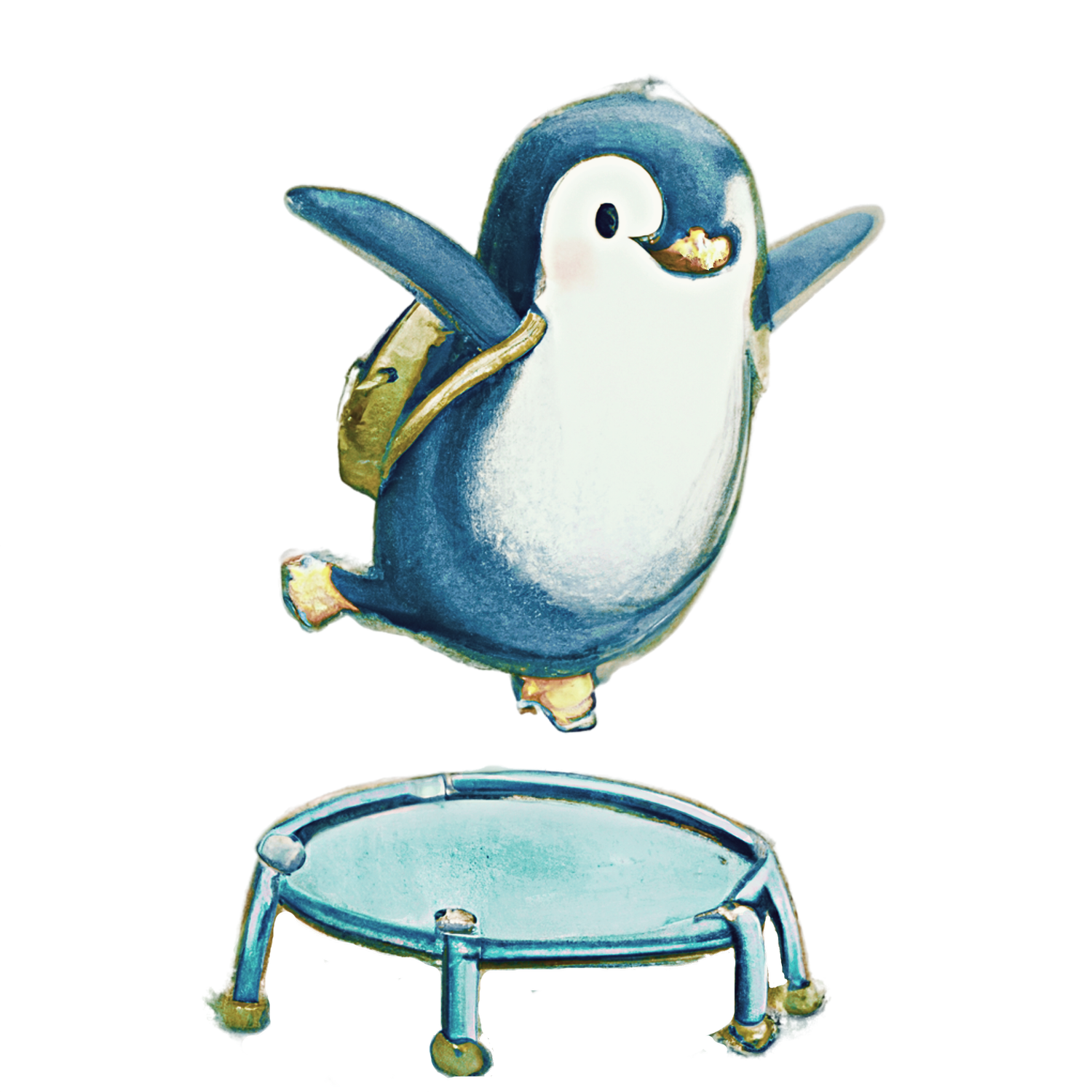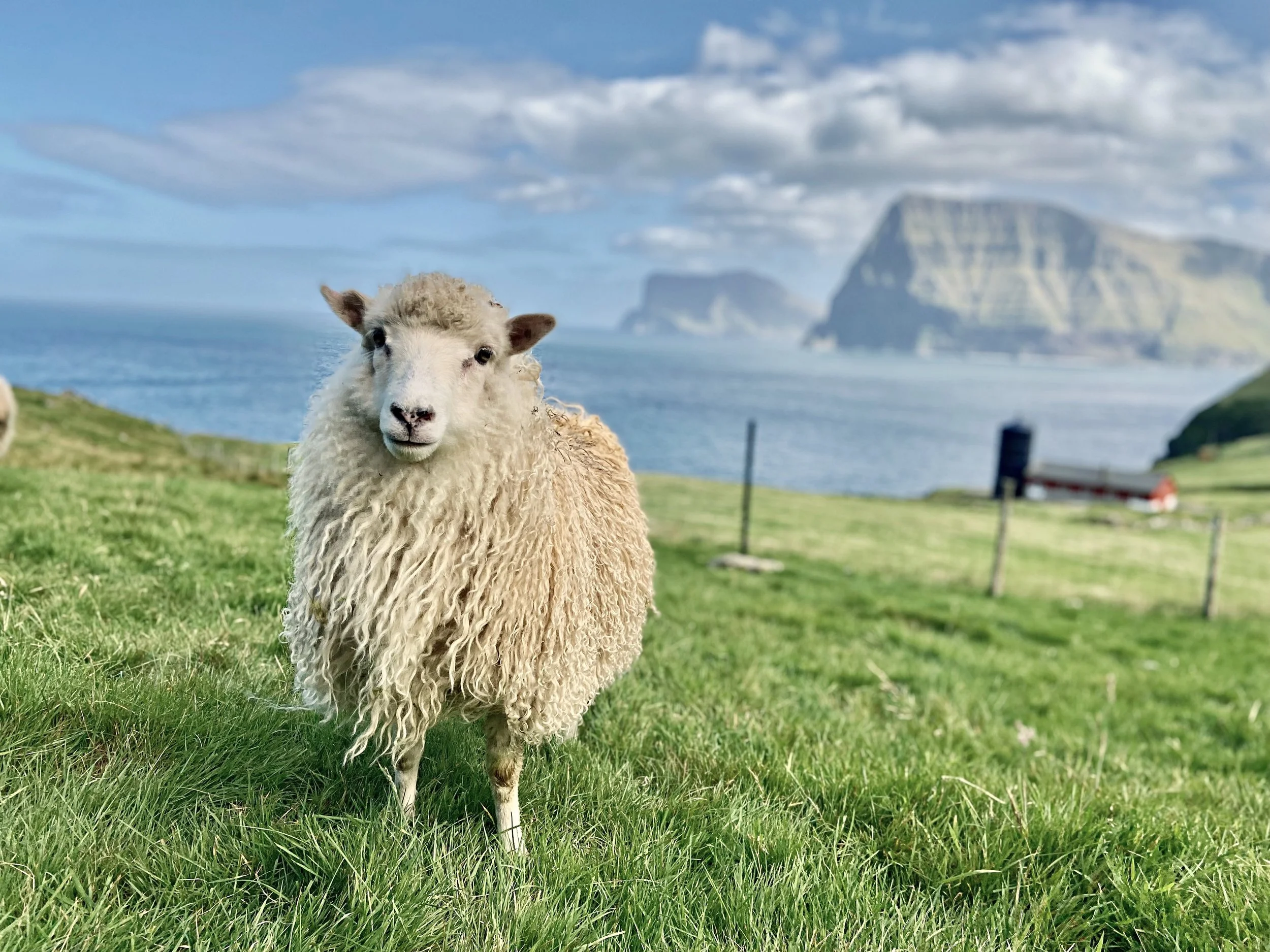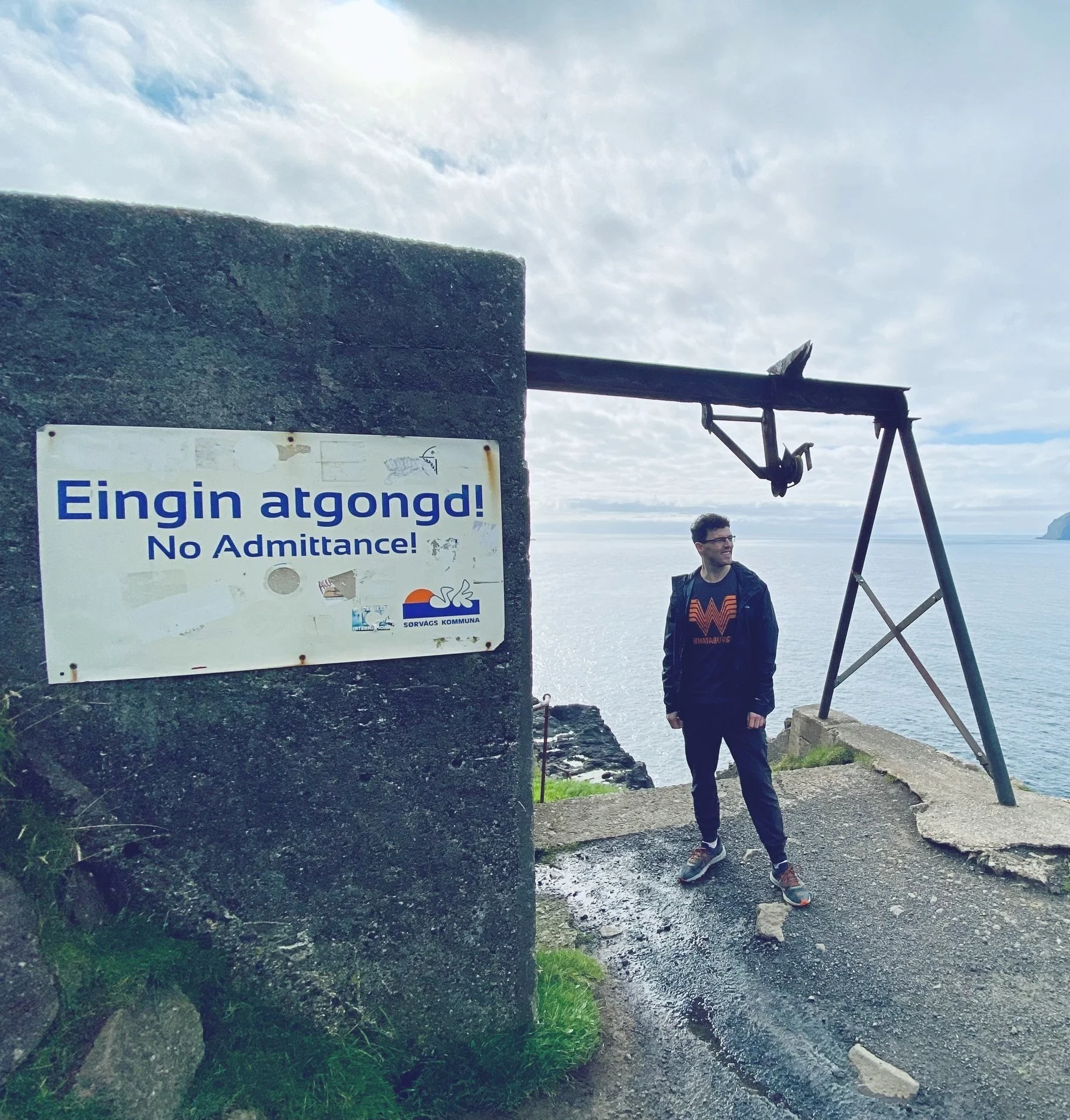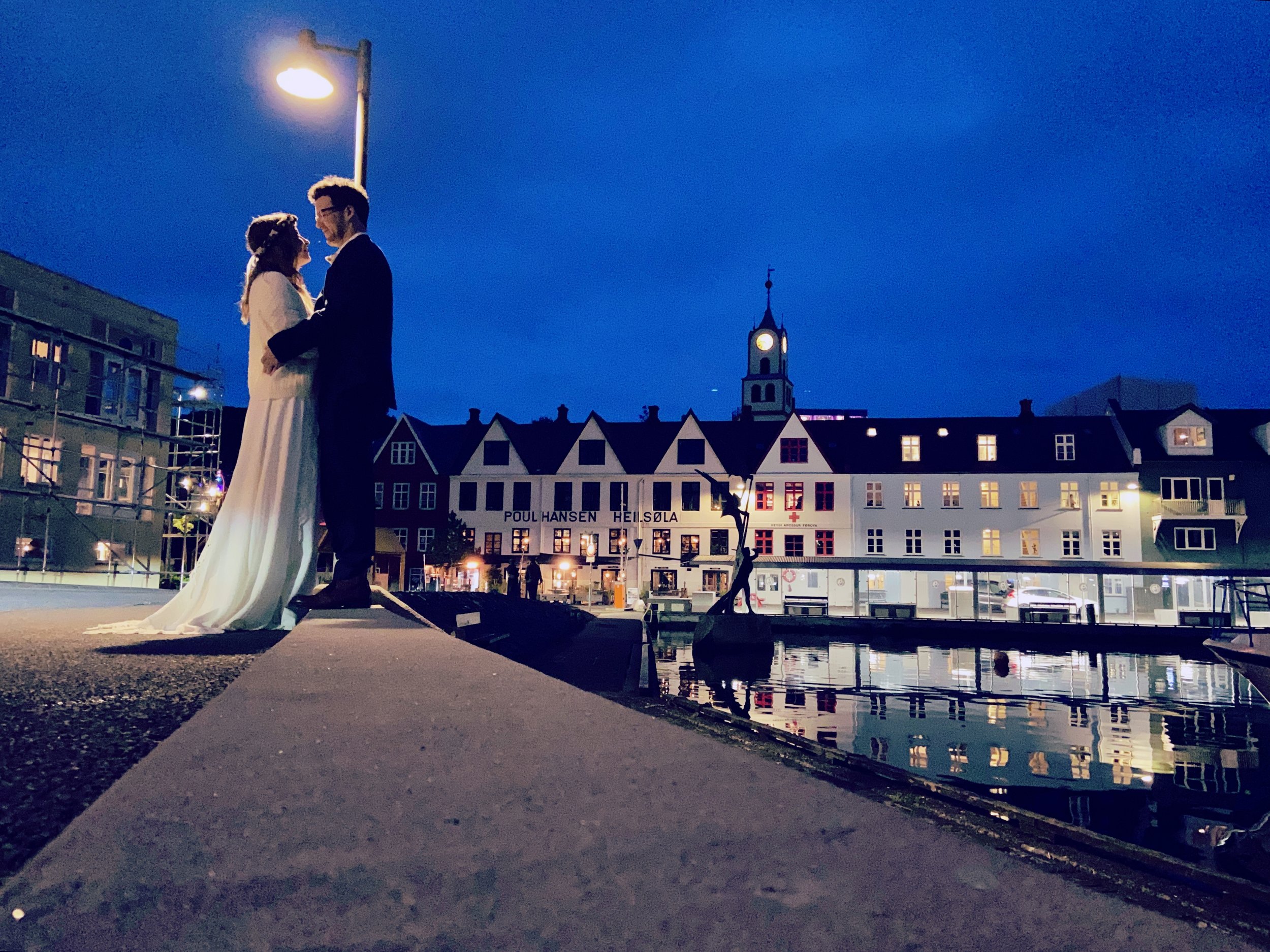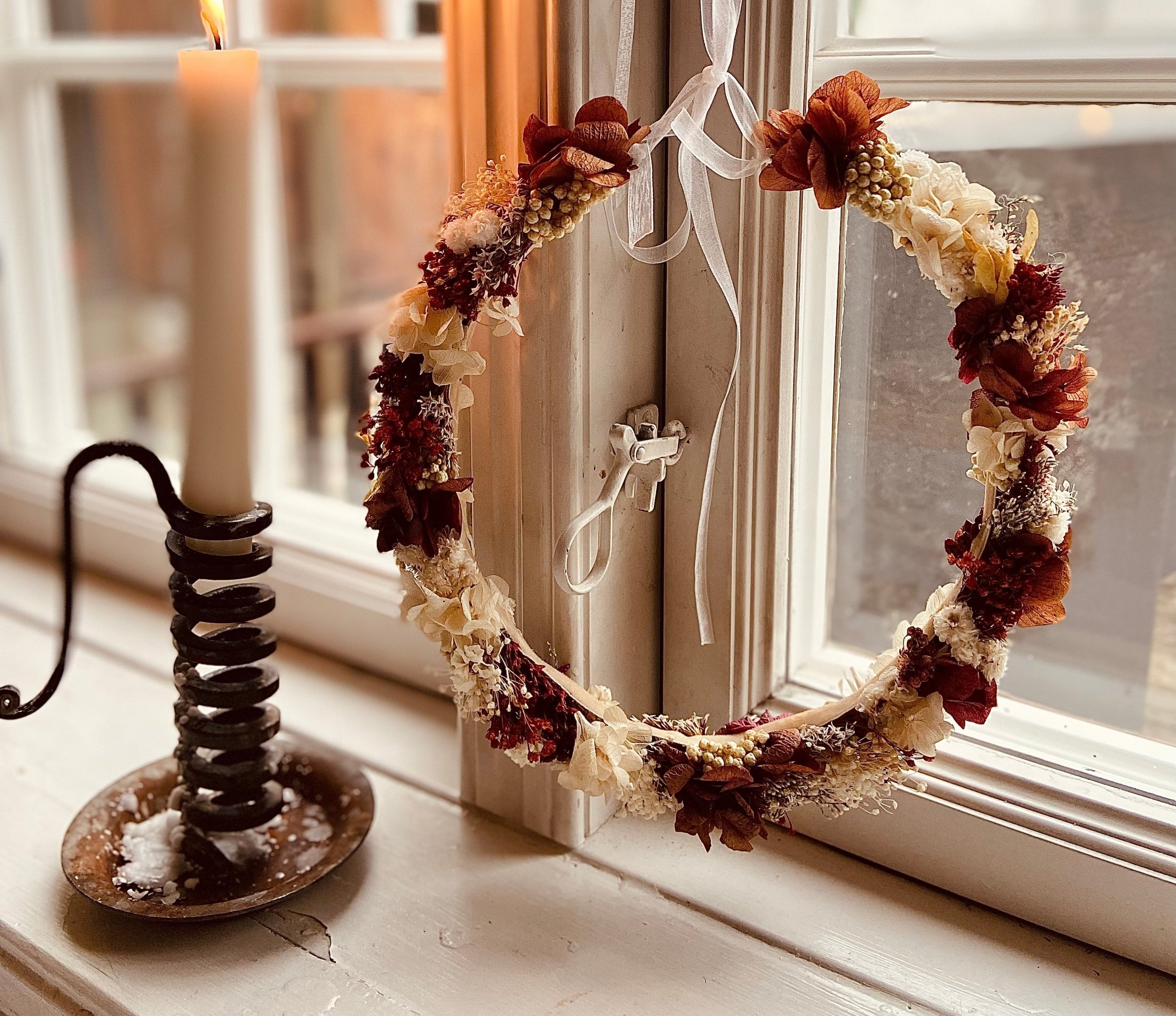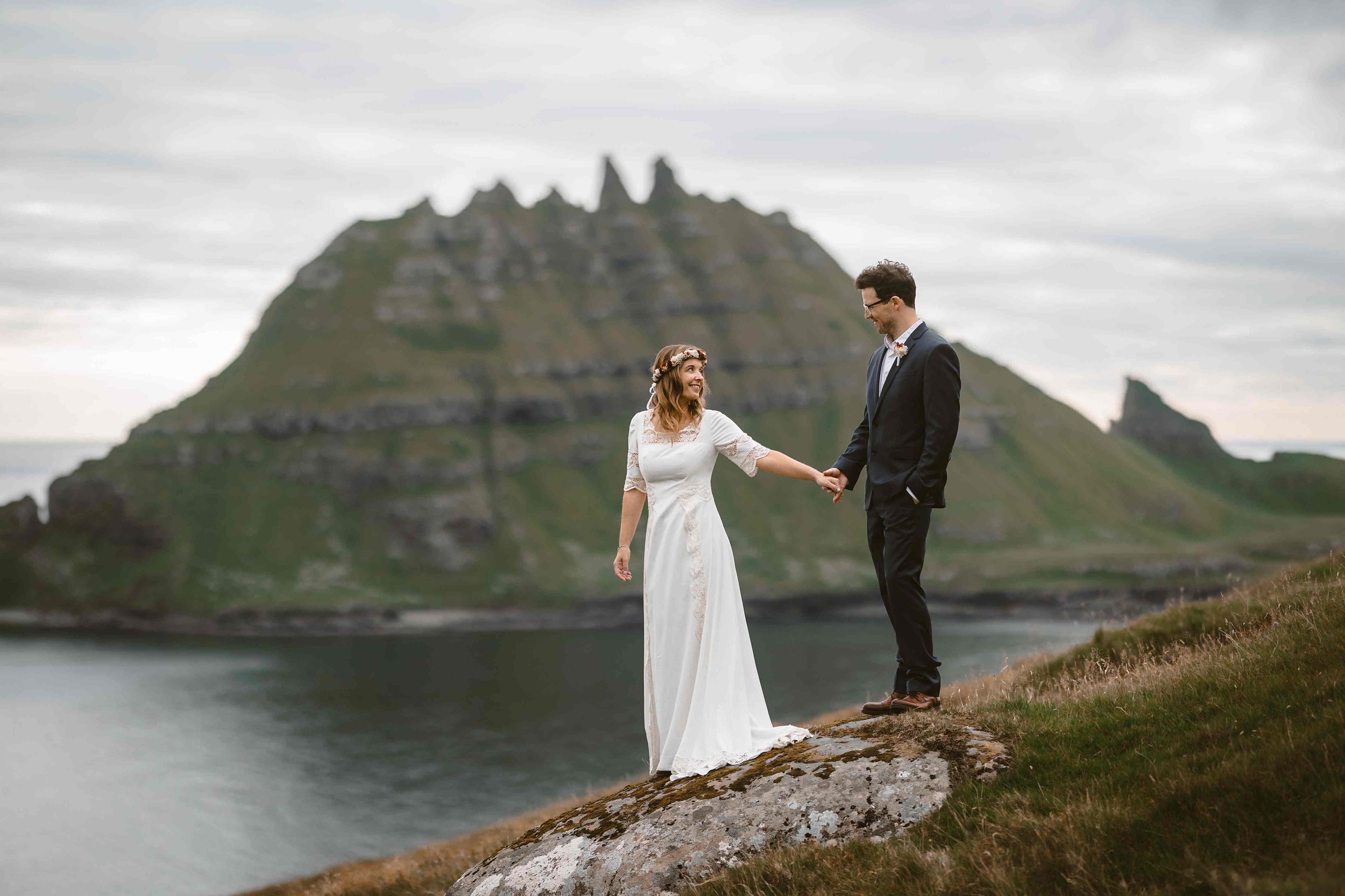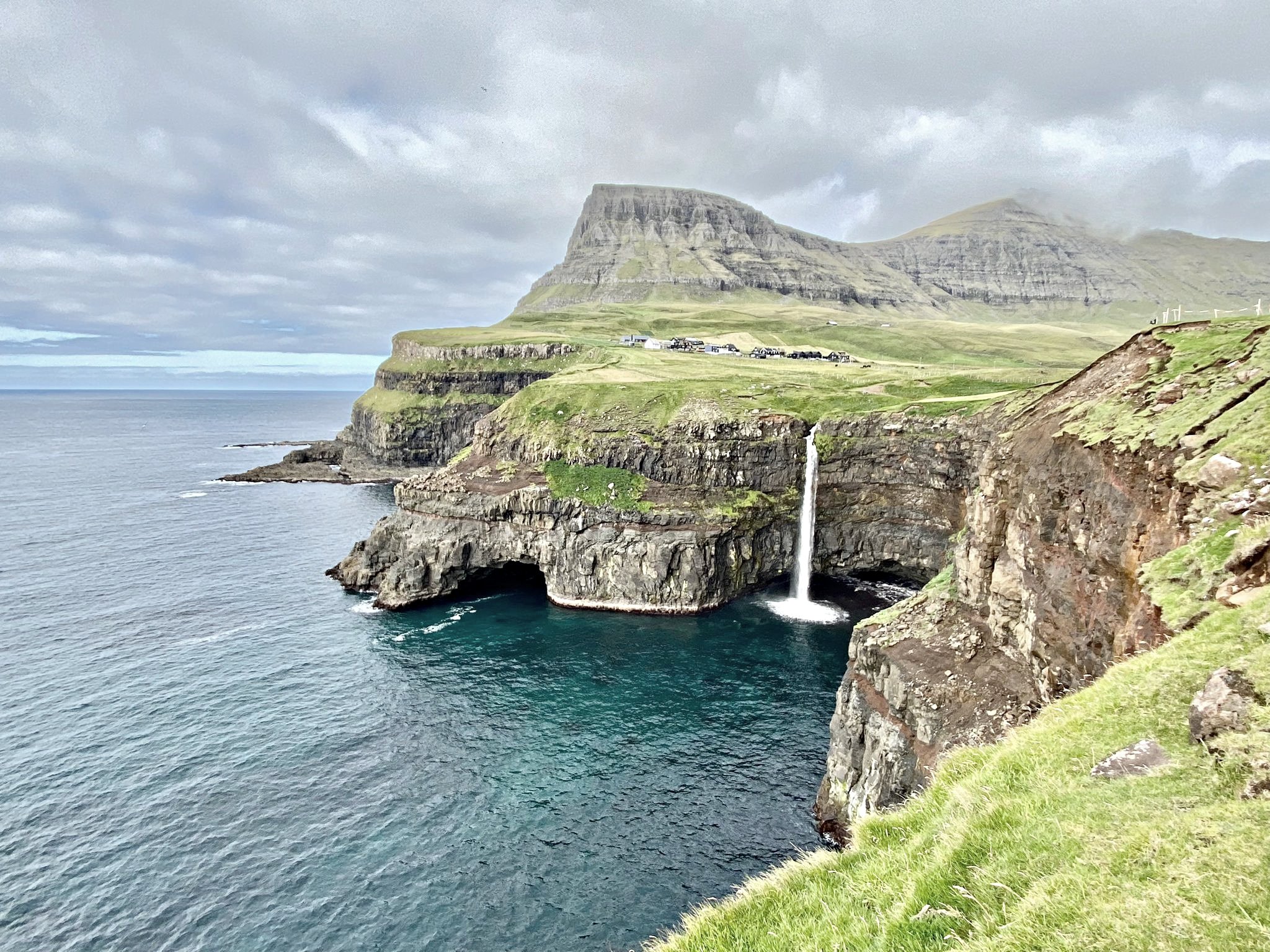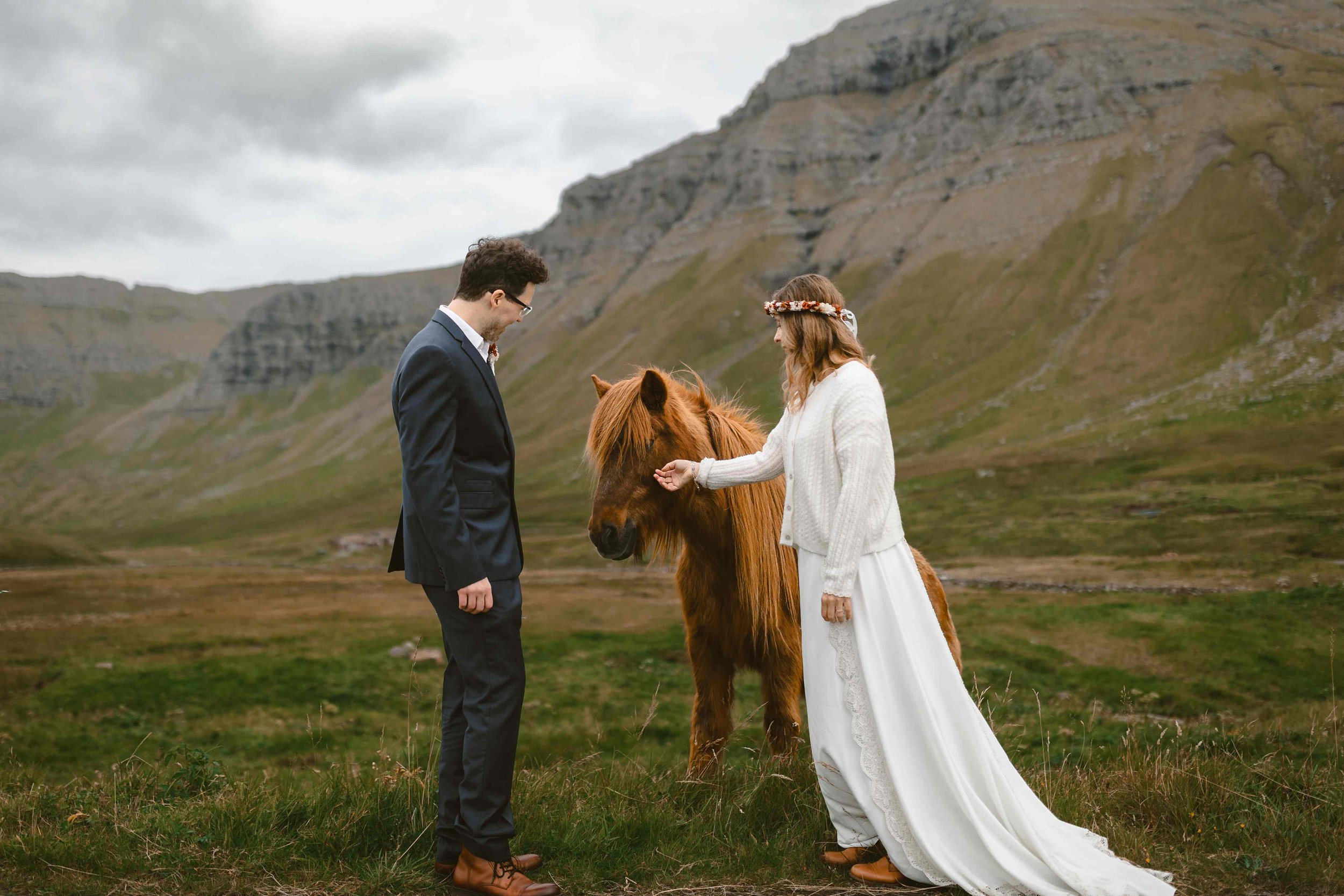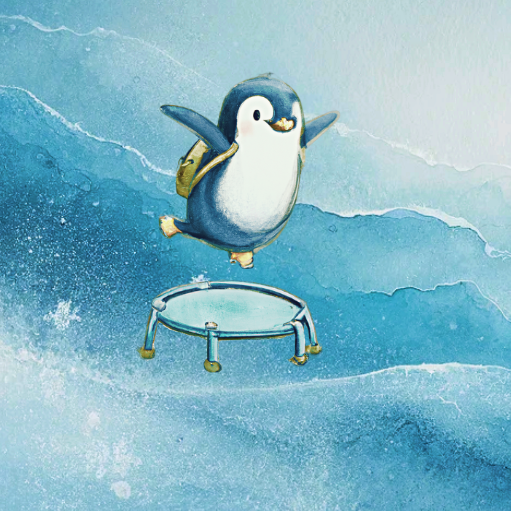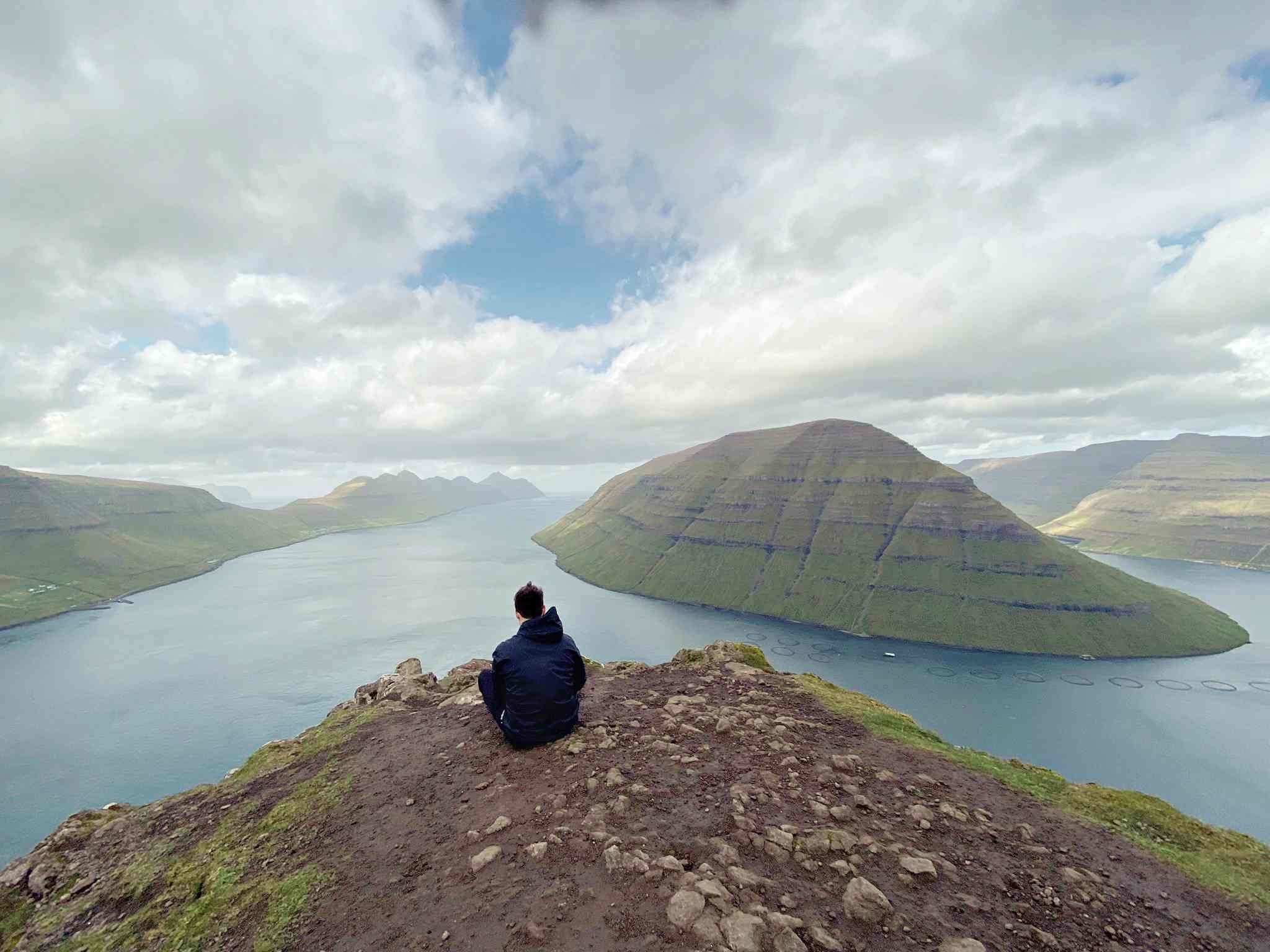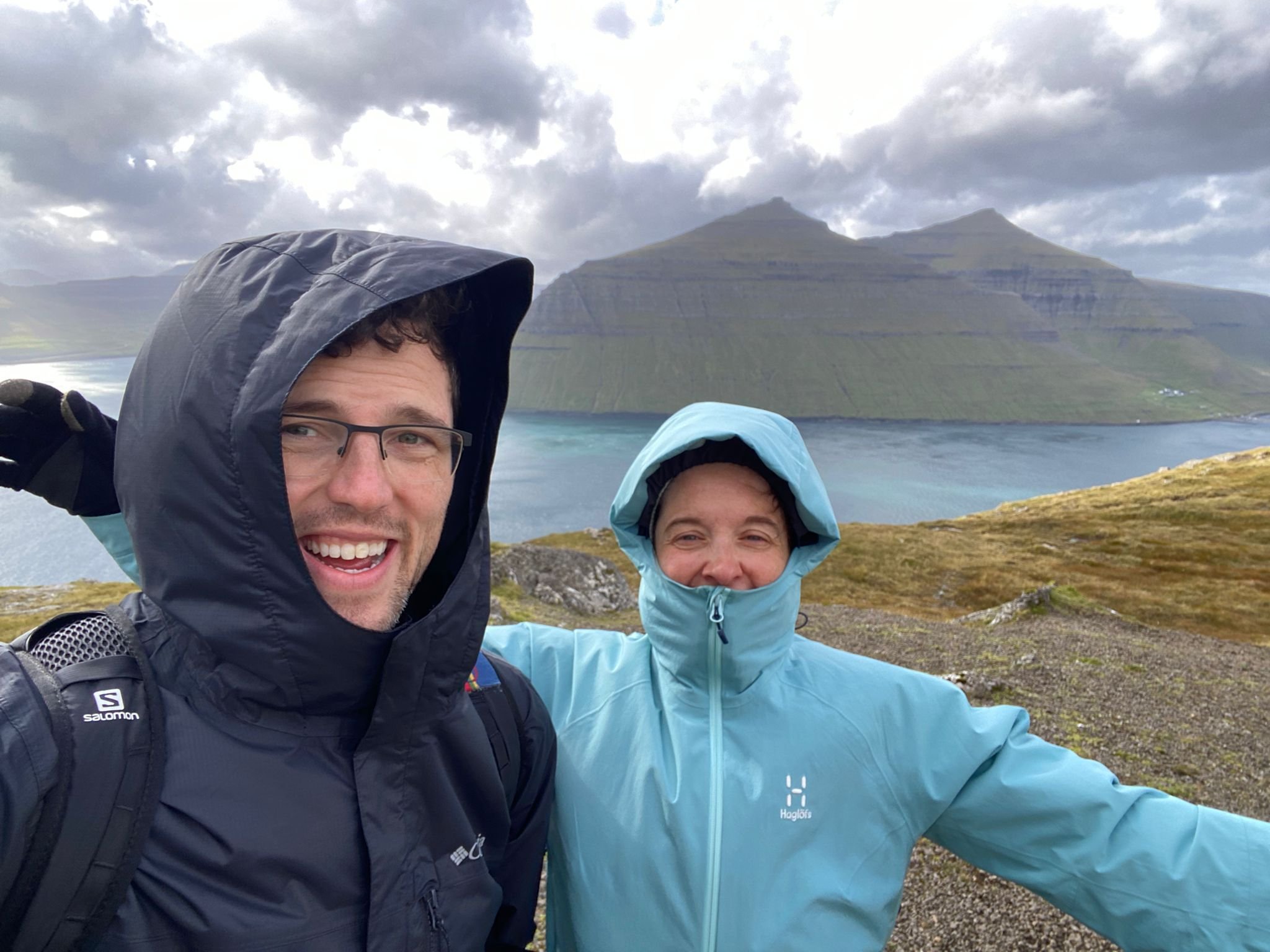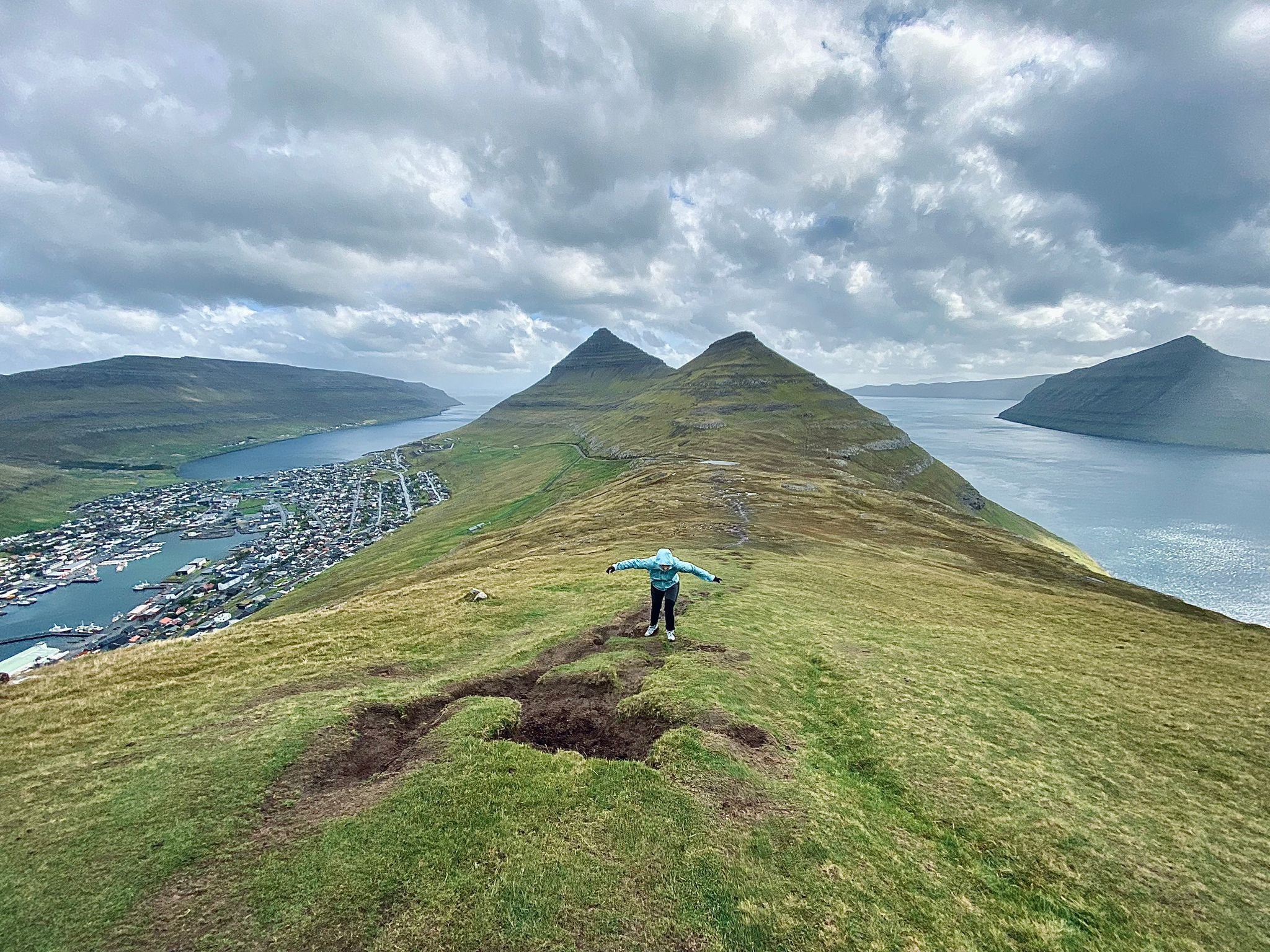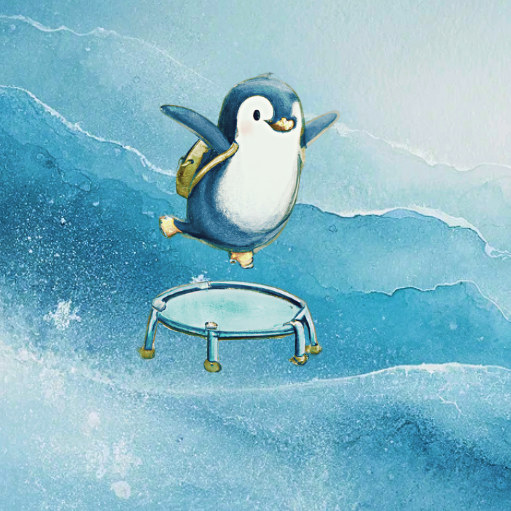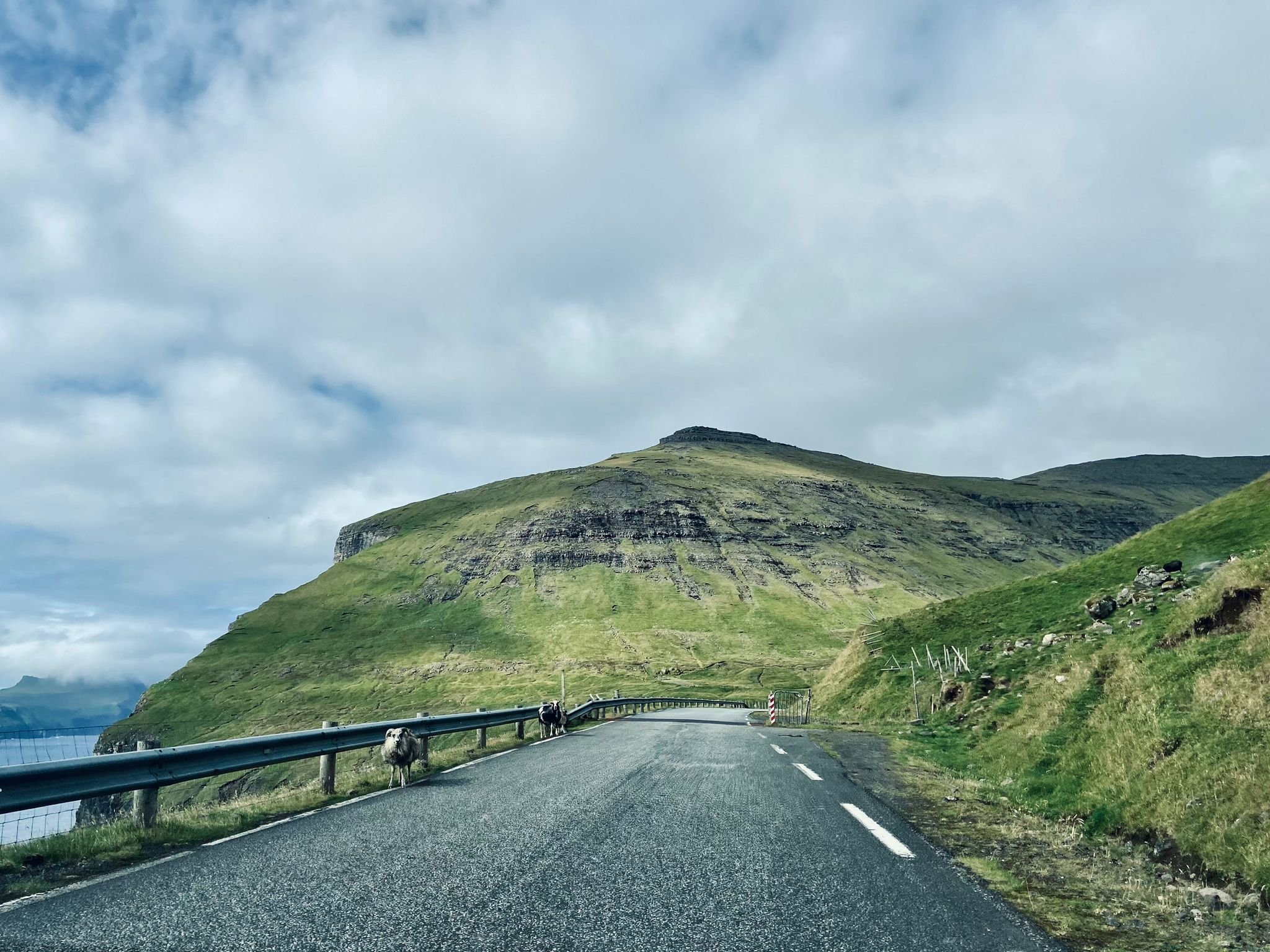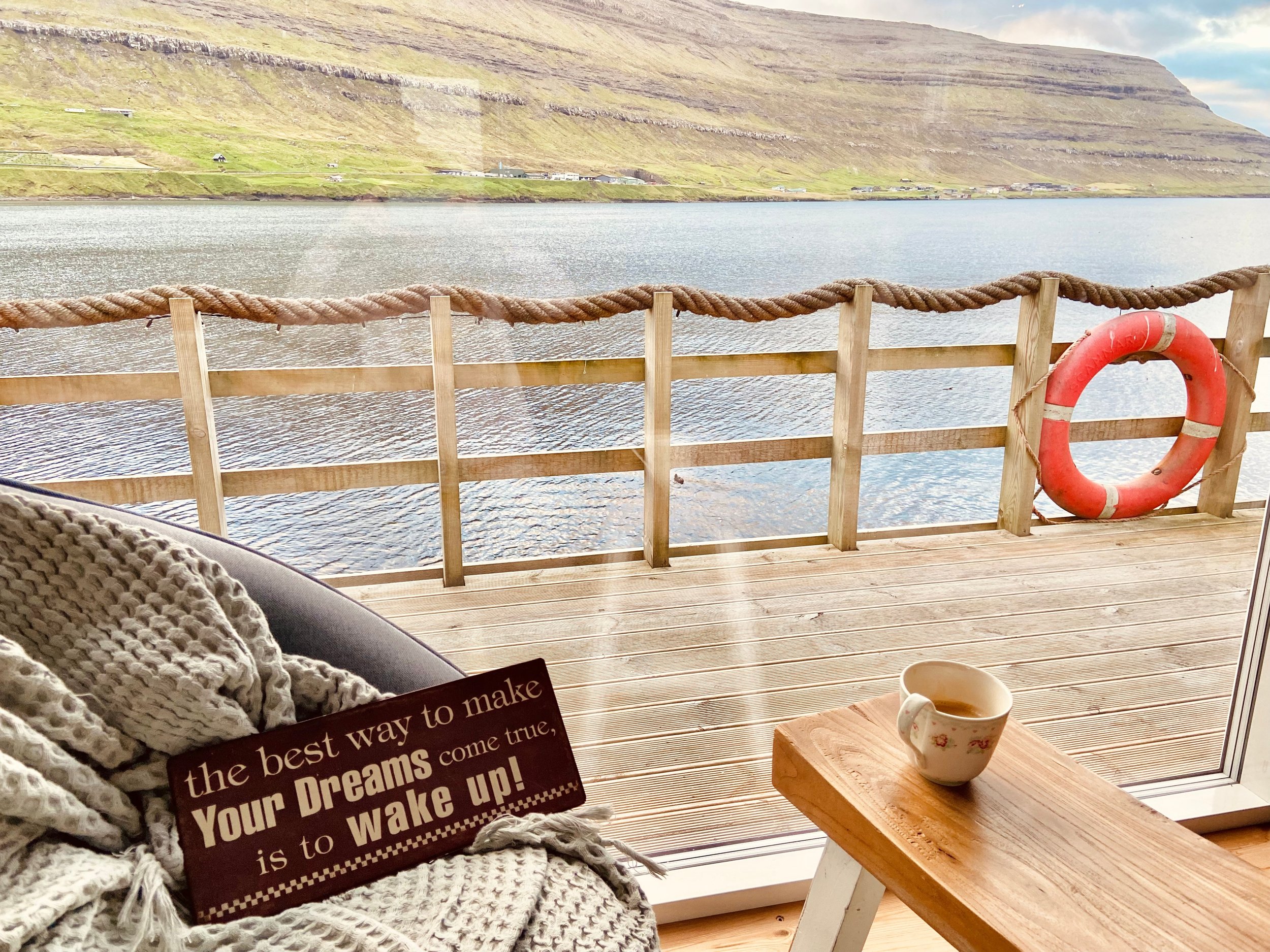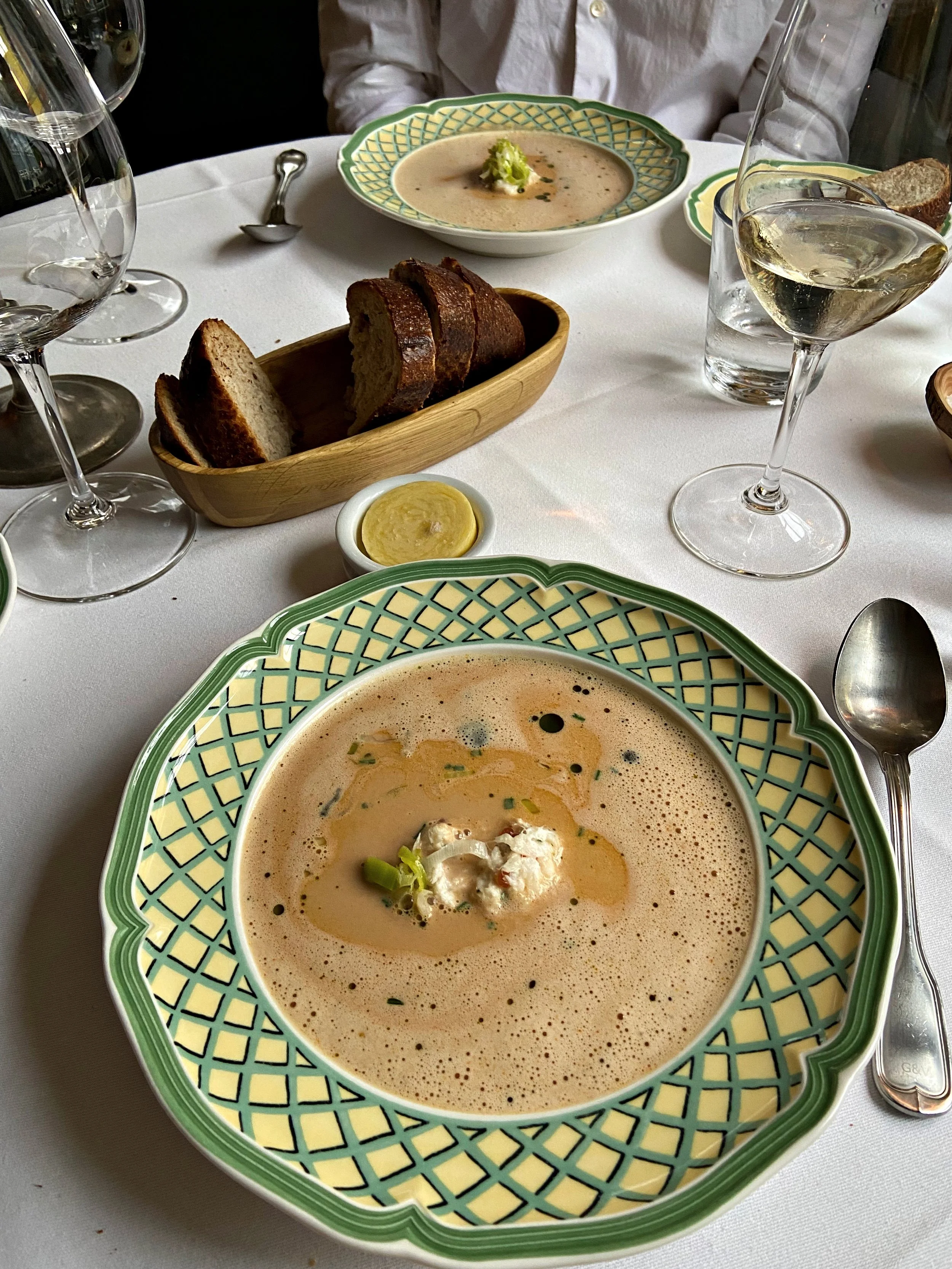Trip to the Faroe Islands – Hiking, Hidden Villages & Where to Stay
Cliffs, fog, and sheep with better views than most of us — the Faroe Islands are wild, remote, and unforgettable.
Curious lamb on Kalsoy - elected cutest sheep of our trip to the Faroe Islands!
Last update: November 5, 2025
Wondering about Faroe Islands vs Iceland? Don’t get us wrong, we absolutely love Iceland. But traveling to the Faroe Islands had been in our minds for a while: still off the beaten track, but with more affordable flights than a few years ago.
We were looking for a nature destination with whimsical, dramatic landscapes for our unofficial wedding. Iceland had gotten way too popular, and the Lofoten Islands seemed to be following the same path…
We found the perfect Faroese photographer, so we decided to travel to the Faroe Islands to symbolically get married, and, of course, explore this one-of-a-kind destination!
Join us on an unforgettable trip with our Faroe Islands Travel Guide!
Spoiler alert: A very famous character died there!
🧳 Field Notes
When we went: Late August-early September, when most tourists are gone, accommodation is cheaper but days are still long , withat that ever-changing mix of sun, wind, rain and mist.
Where we stayed: In Hotel Brandan in Tórshavn, the tiny, colorful capital, and in a fisherman cabin in Klaksvík, with sheep and waterfalls for neighbors.
How we got around: By rental car, crossing underwater tunnels and one-lane mountain roads to reach villages like Gjógv and Saksun.
Highlights: Our unofficial wedding, Kalsoy, eating fresh seafood everywhere, and realizing every view looks like it belongs on a postcard.
Mistakes we made: Trusting the weather forecast — it changes every ten minutes. Always bring waterproof everything, even if it’s sunny when you leave.
Where to stay in the Faroe Islands
There aren’t many hotels, so it’s smart to check what’s available before you plan the rest.
Getting around the islands
You’ll need a car to reach villages, tunnels and trailheads — buses don’t go everywhere.
Faroe tours that actually run
Boat to Mykines, village visits, and seasonal trips — book these ahead, they’re limited.
Are the Faroe Islands a country?
We had been dreaming about visiting the Faroe Islands for several years, but we realized that most people didn’t know where it was, or wondered if it was even a country. So, here is a brief geopolitical lesson for you!
The Faroe Islands are not an independent country but an autonomous territory within the Kingdom of Denmark — just like Greenland.
They’re located in the North Atlantic Ocean, approximately halfway between Scotland and Iceland. The Faroe Islands consist of 18 major islands and a number of smaller islets, and they have their own government and parliament.
Don’t count on Google
Google Translate doesn’t speak Faroese, so it won’t be of any help. But it makes things more entertaining! The tourism board actually launched a funny marketing campaign about this a few years back. That being said, if you’re familiar with other Scandinavian languages, you’ll grasp a few things.
Things to do in the Faroe Islands
Even if hiking isn’t your thing, there are plenty of cool sights and short strolls around the archipelago.
Actually, the Faroe Islands are the perfect place to unwind, enjoy the peace and quiet, discover the local culture and observe the grazing sheep. Oooooom.
Below are a few ideas tried and tested by us at Penguin Trampoline.
Join an open mic in Tórshavn
So, as mentioned, we got symbolically married in the Faroe Islands. We basically had a sightseeing photoshoot with an awesome photographer around Vágar, and then enjoyed a delicious meal in town — see below for restaurants.
The day before, a very friendly lady had invited us to an open mic at a local concert venue. We thought that would be a fun wedding ‘reception’, so we showed up at Reinsaríið in our wedding attire. The local kids sang special love songs for us, it was super emotional, and we had the best time!
So, takk fyri to MonkeyRat for inviting us!
Besides singing along with the locals, it’s lovely to walk around Tórshavn. The old center is made of traditional stone houses — most still inhabited — and the small harbor is gorgeous, day and night.
Hit the beach
Many beaches are a little hazardous to swim due to waves and currents.
However, if you fancy a cold dip, you can go to Bøur — ask the locals how to pronounce this, it’s hilarious — or Sørvágur, both on Vágar.
Obviously, being volcanic islands, the beaches are black, like in Iceland. You’ll find other beaches scattered around the islands. For swimming, just make sure you’re in an inlet and not open sea.
Beach fun in Bøur! - Photo credits: @OPHfoto
Eat a waffle at a local’s house in Tjørnuvik
At the end of the road — or the world? — in the adorable village of Tjørnuvik, a lovely local by the name of Hans sells waffles with cream, jam and coffee in his own house.
If you don’t have cash, you can mail him the money. He actually collects postcards from all over the world. Takk fyri for this unique, off-the-beaten-track experience!
See a really old cathedral in Kirkjubøur
A 15 minutes drive from Tórshavn, don’t miss Kirkjubøur Cathedral, also known as St. Magnus Cathedral.
Kirkjubøur Cathedral is one of the most significant historical sites in the Faroe Islands. Construction of the cathedral began in the 13th century. It was intended to be the largest church in the Faroe Islands, but due to various factors, including lack of resources and political instability, it was never finished.
Kirkjubøur Cathedral holds significant cultural and historical importance for the Faroese people. It serves as a reminder of the island's medieval past and its connection to the wider Nordic world.
In addition to the cathedral ruins, the village of Kirkjubøur is home to several other historic buildings, including the Magnus Cathedral Farm, which dates back to the Middle Ages, and the Olav's Church, which was built in the 12th century and is the oldest surviving church in the Faroe Islands.
On a rainy and foggy day, the atmosphere is movie-worthy!
Kirkjubøur Cathedral, out of a movie
Spot some whales
Ask locals if they’ve spotted some bottle nose whales, as they sometimes linger in the fjords, especially around September.
We saw some in Kollafjørður during several days, and we even got wedding pics with them!
🌊 Track Sea Creatures with Fahlo – 20% Off
Follow a real whale, sea turtle, shark, or dolphin as it swims through the wild blue. Fahlo’s ocean-themed bracelets fund marine conservation and give you live tracking access — names, locations, and movement updates included. Great gift, great cause, and 20% off with our link.
👉 Get 20% off Sea Life Bracelets
Take a grammable pic at Múlafossur
Undoubtedly the most photographed sight of the Faroe Islands, Múlafossur waterfall is a true Faroese postcard, with the cute village of Gásaladur in the background.
But Múlafossur is not the only attraction in the area. The road leading to it is absolutely breathtaking, with views on the dramatic Skerhólmur and surrounding islands.
Animal lovers will rejoice with sheep, horses, geese, and a friendly dog at the entrance of Gásaladur.
It was the perfect setting for our wedding pictures!
For a cozy break, stop at the local café and sample some dried mutton with butter. Yum!
Shop in Runavík
For all shopaholics penguins out there: The Faroe Islands are not the place to go!
You’ll find a few stores in Tórshavn and Klaksvík, as well as some tourist shops scattered around the islands in season, but that’s about it.
Your best bet is Navia yarn and wool manufacturer in Toftir. You’ll find nice, locally-made souvenirs, and a wire range of wool items for all budgets. They even offered us homemade cake when we told them we had just gotten married!
While in the area, visit Runavík for more wool shops. A great option if the weather is really bad!
Eli watched this documentary on Faroese wool on the plane and strongly recommends it!
Penguin Trampoline tip:
If you like objects with a soul, check out the second hand store Blákrossbúðin. We found some gems, including a hand-knitted woolen sweater for a bargain!
Best hikes in the Faroe Islands
If you’re used to hiking in the Nordic Countries, particularly in Norway, you’ll find that hiking in the Faroe Islands is fairly easy.
It’s more hills than mountains, so it’s not that steep. However, the wind can really get crazy and make a hike exponentially harder and dangerous. And when the fog joins the party, you can only imagine.
Of course, if you’re a novice hiker, we recommend booking a guided hike. You’ll also get some interesting insights from a local expert!
Penguin Trampoline tip:
If the wind picks up on your hike, and you’re on a ridge, start crawling instead of walking, and grab whatever you can find. Eli used a backpack for added weight.
It’s also worth mentioning that some landowners are charging a fee to hike the more popular trails, especially in summer.
While some visitors get mad when they find out, keep in mind that farmers use these lands for sheep grazing and need to maintain it. If several thousands of hikers use the same trail, it’s going to get impassable, and it will require some regular maintenance work.
We’ll cover this for each hike below.
Lake Leitisvatn – Trælanípa (Vágar)
This is probably one of the most popular hikes of the Faroe Islands for several reasons.
First, the ratio difficulty/spectacular view is hard to beat. The trail doesn’t require any technical skills and takes about 2 hours round trip. It’s mostly flat, and goes up only towards the end of the trail, to reach the top of the cliff.
It’s also super close to the airport and Tórshavn.
You can park in Miðvágur, and then follow the signs. You’ll have to pay the hiking fee (200 DKK per person at the time of writing).
Take your time and enjoy the peaceful surroundings, walking along the lake and then the ocean until the final viewpoint.
The Lake Above the Ocean
From there (Trælanípa), you'll be treated to a stunning view known as 'Lake Above the Ocean,' where the lake seems to hang above the ocean amidst impressive cliffs. You can also continue your walk to see Bøsdalafossur waterfall and catch sight of the distant sea stack Geituskorardrangur.
Kallur lighthouse (Kalsoy)
Our favorite hike! If you’re staying around Klaksvík, you can take a ferry to Kalsoy Island. Book ahead as it gets full, especially on sunny days!
Driving is not recommended on the islands due to the narrow roads and tunnels, and there’s just not enough space for hundreds of cars. It’s more convenient and more respectful to the locals to take the ferry and then hop on the bus. There’s a schedule, but they sometimes run more ferries and buses when it gets busy.
Your journey commences in the village of Trøllanes. Initially, you'll have to hike up — after paying the hiking fee of 200 DKK/person at the time of writing — but after that, you can effortlessly follow the trail, soaking in the breathtaking vistas of nearby Kunoy Island and talking to the skittish sheep along the way. Expect some muddy patches along the way, but nothing too bad.
RIP James Bond
If this view looks familiar to you, you might have seen it on Instagram… or in the James Bond film, No Time to Die! In fact, you can pay your respect on 007’s grave!
On the pic: Have you ever seen two people so happy around a tomb?
And then, you’ll finally see the mighty Kallur Lighthouse. Expect around an hour to get there, one way.
For the best postcard view, an extension of the trail leads to the most adventurous viewpoint of the lighthouse. It's worth noting that this final stretch may not be suitable for people with vertigo, as the narrow path is flanked by steep hills and sheer cliffs that drop into the ocean.
But if you’re fine with heights and the wind is manageable, go for it! Just keep in mind that you might have to crawl, like Eli below.
Klakkur (Borðoy)
While in Klaksvík, don’t miss mighty Klakkur!
It might not be very high, but the views are out of this world.
This brief and straightforward trail leads you to a stunning mountain ridge that offers sweeping views of Kunoy Island and the surrounding archipelago. Additionally, it's an ideal spot for catching breathtaking sunsets, provided the weather cooperates. The short distance from start to finish (roughly 2 hours round trip) makes it one of the premier hikes in the Faroe Islands.
The trail is well-marked and easy to navigate, guiding you through grassy terrain and a moderate incline, ultimately rewarding you with a panoramic vista over Klaksvík, gorgeous in any season.
To reach the trailhead, simply follow the gravel road Niðan Horn until you arrive at an unpaved parking area adjacent to a gate.
Út á Lónna - Saksun (Streymoy)
Saksun is one of those places where you wonder if you’re in a dream. It doesn’t get more picturesque than this, with its stoned houses and adorable church nestled in a green decor of hills and water!
This is more a stroll than a hike, but it’s totally worth parking in Saksun and walking down to the black beach. The trail doesn’t take you more than an hour and is mostly flat, with waterfalls, inlets (depending on the tide) and peaceful sheep. There’s a hiking fee in summer, but it wasn’t locked offseason.
Gongutúrur/Hvithamar (Eysturoy)
So, our initial plan was to hike Slættaratindur. But the wind and the sleet were so strong we couldn’t even walk. Abort, abort!
We ended up walking the more gentle Gongutúrur/Hvithamar trail (about one hour return), above the picturesque village of Gjögv.
The weather was not collaborating, but the views must be stunning on a clear day!
Best time to visit the Faroe Islands
Due to its mild climate and limited snow fall, the Faroe Islands can be explored year round. The Faroe Islands summer (June–August) is the best time for hiking and long daylight hours. Spring and autumn are quieter and still beautiful, though fog and rain become part of the story.
Each season has its own charm, but keep in mind that the weather is unpredictable. Regardless of the season, make sure to carry the appropriate clothing, water and food, especially when hiking. It’s also a good idea to have a travel insurance (get 5-15% off with our partner Heymondo)— note that the Faroe Islands are not in the EU.
Most visitors flock to the Faroe in late spring and summer, to enjoy longer days and the puffin season. However, in such a small country, it creates a seasonality issue. If you can, we recommend a trip to the Faroe Islands off season. Plus, everything will be cheaper, and you’ll see fewer people on the trails!
It all depends on your preferences, availability and budget, but here’s a small guide.
Summer (June to August)
As mentioned, summer is the peak tourist season in the Faroe Islands due to the milder weather and longer daylight hours.
Temperatures typically range from 8°C to 15°C (46°F to 59°F), making it relatively comfortable for outdoor activities.
This is an excellent time for hiking, birdwatching, and exploring the islands' rugged landscapes.
Autumn (September to October)
Autumn offers stunning landscapes adorned with golden hues as the foliage begins to change.
It's a quieter time to visit compared to summer, with fewer tourists crowding popular attractions.
Temperatures start to cool down, ranging from 5°C to 12°C (41°F to 54°F), but it's still possible to enjoy outdoor activities.
Keep in mind that autumn also marks the beginning of the stormy season, so expect windier and wetter weather. Early September, we had a mixed bag of rain and sun.
Winter (November to March)
Winter in the Faroe Islands is characterized by short days, long nights, and colder temperatures.
Daytime temperatures typically range from 3°C to 7°C (37°F to 45°F), with occasional snowfall in higher elevations, which makes everything extremely picturesque.
Winter is an excellent time for experiencing the islands' dramatic weather and atmospheric landscapes, and several hikes are still accessible.
It's also a good time for spotting the northern lights if the solar activity is high enough and the sky is clear. Check our article: Northern Lights for Dummies for the best tips.
Spring (April to May)
Spring brings milder temperatures and longer days as the landscape begins to bloom with vibrant colors.
It's a great time for birdwatching, as many migratory birds return to the islands during this season.
However, weather can still be unpredictable, with occasional rain and fog.
Driving and getting around the Faroe Islands
While there is public transport, the best way to really explore the Faroe Islands is with a rental car.
9 of the 18 islands are reachable by car, and they’re connected by an excellent system of tunnels, bridges and ferries.
Most people rent their car at Vágar airport, though you can take a bus to Tórshavn — which can be explored on foot — and rent a car from there.
In summer, a rental car can be pretty expensive as the car fleet is limited. Off season, it’s much cheaper.
The islands are not big, and it’s hard to get lost if you follow the signs!
Drive slow, mind the sheep crossing and take your time: the scenery is so spectacular at every turn that you’ll want to stop every 5 minutes!
Penguin Trampoline tip:
There are several paid tunnels in the Faroe Islands. Check which ones are included in your rental car, and plan your itinerary accordingly.
Getting around
You’ll need a car — the beauty here hides between tunnels and hairpin turns. Roads are quiet, and renting through Rentalcars.com makes it easy to explore at your own pace.
Where to stay in the Faroe Islands
If you travel on a budget like us, cheap accommodations and hotels in the Faroe Islands are quite limited.
That being said, off season, it’s a lot more affordable, and you’ll have more choices. It’s actually one of our tips to travel cheaper!
We indulged a bit by staying at Hotel Brandan in Tórshavn for 3 nights as our wedding photographer gave us a 3-days window to get the best weather possible.
When we say ‘indulged’, we paid about 140 €/night with (delicious) breakfast in low season by booking ahead of time, and with our Genius discount on Booking.
Taking into account the local cost of living — they have to import a lot of things — the quality of the accommodation, the breakfast quality/quantity and the service, it was an outstanding value for a nice hotel in the Faroe Islands. They even left a wedding gift in the room with delicious chocolates and flower petals!
For the rest of the trip, we stayed at an adorable holiday rental in Klaksvík — a rustic but well-equipped fisherman’s cabin on the water with an outdoor hot tub, perfect for cold and hot dips!
Here’s a quick list of hotels to get you started:
Hotel Føroyar (Tórshavn) – panoramic views over the capital.
Hotel Brandan (Tórshavn) - lovely, attentive staff and great location
Havgrím Seaside Hotel 1948 (Tórshavn) – boutique, lovely views, close to harbor.
Gjáargarður Guesthouse (Gjógv) – for hikers, great location.
It’s a good idea to stay at two different locations to explore several islands.
Map of Faroe Islands hotels
Zoom in to explore hotels, guesthouses, and cabins across the islands — all with live prices from Booking.com.
How to get to the Faroe Islands?
In high season (mostly spring-summer), there are direct flights between the Faroe Islands and several European cities.
We found a reasonably-priced flight from Barcelona to Vágar with Atlantic Airways. Good to know: a checked-in suitcase is included! Our return flight was in September, so the direct flight was no longer running, and we booked a flight from Vágar to Copenhagen, and then from Copenhagen to Barcelona with Vueling.
Depending on where you live, that might be cheaper than a direct flight, actually.
You’ll also find routes to the US East Coast with a stopover in Iceland. The perfect occasion to soak in the Blue Lagoon for a few hours!
Where to eat in the Faroe Islands
When we travel to Northern Europe, we mostly have breakfast and dinner at our accommodation due to the high cost of eating out. And we usually prepare a packed lunch to take on our hikes. Check our other tips to travel cheaper here.
But, of course, we treat ourselves to a restaurant meal one or two times every trip.
Since we were getting married, we decided to celebrate with a traditional, farm-to-table Arctic dinner at Áarstova, in one of Tórshavn’s historical houses. And it didn’t disappoint! Maybe we were on a wedding high, but it was one of the best meals of our lives. We actually feature it in our article on Arctic Foods!
In Klaksvík, we can recommend the fish soup at Fríða Kaffihús, and the super fresh fish & chips Fiskurin, right by the harbor.
Heimablídni
To fully immerse in a culture, nothing beats mingling with locals over a traditional meal. In the Faroe Islands, "heimablídni" offers intimate dining experiences in Faroese homes, serving authentic homemade food and sharing unique local stories. More info here.
On the pic: Traditional lobster soup at Áarstova
FAQ: Traveling to the Faroe Islands
Are the Faroe Islands part of Denmark?
Yes — the Faroe Islands are an autonomous territory within the Kingdom of Denmark, with their own government, language, and culture. They’re not part of the European Union, so your EU health card won’t apply here (you’ll need travel insurance that covers non-EU regions).
Do I need travel insurance for the Faroe Islands?
Absolutely. Because the islands are outside the EU, standard European insurance doesn’t cover medical care or travel disruptions. We recommend Heymondo Travel Insurance — our readers get 5 to 15% off, and it protects you if flights or ferries are delayed (which is part of the charm here).
What’s the best time to visit the Faroe Islands?
The best time is from May to September, when you’ll have long days, mild weather, and puffins on the cliffs. Summer is ideal for hiking and boat trips, but early autumn is quieter and beautifully moody.
What currency do the Faroe Islands use?
The Danish Krone (DKK) — prices are high, but not outrageous if you plan smart. You can use cards almost everywhere, even in small villages.
Do people speak English in the Faroe Islands?
Yes — English is widely spoken in Tórshavn and tourist areas. In remote villages, not everyone speaks it fluently, but locals are kind and always find ways to communicate.
Do I need a visa for the Faroe Islands?
If you’re from the EU, UK, US, Canada, Australia, or most of Europe, you don’t need a visa for short stays. The islands have their own entry rules separate from Schengen, but arrivals from Denmark are typically seamless.
Is it expensive to visit the Faroe Islands?
Yes — food and rental cars are pricey, and accommodation options are limited. To save money, travel in shoulder season, stay in guesthouses or self-catering rentals, and cook a few of your own meals. The views, however, are absolutely priceless.
Is it better than Iceland?
We’d never say “better,” just different. The Faroe Islands are smaller, quieter, and far less touristed — but they don’t have Iceland’s geothermal energy. If you prefer raw nature, empty roads, and sheep for company, you’ll love it here.
Finally, here is a little ambiance to start planning your trip to the Faroe Islands:
As our plane takes off along the imposing cliffs of Vágar, we get emotional.
Leaving the Faroe Islands, it’s not just unforgettable memories and wedding bands we bring back, but also a sense of profound peace and connection with nature, and an irresistible desire to go back.
Farvæl, beautiful islands. We hope more people will visit… but not too many!
Planning to visit other magical islands in the far north?
🌋 Iceland Guide — Volcanoes, waterfalls, and the road trip of your geothermal dreams.
🏨 Best Northern Lights Hotels in Iceland — Cozy cabins, glass igloos, and wild skies where the aurora dances right above your bed.
🇮🇸 Things to Do in Iceland in Winter — Ice caves, auroras, and all the frozen magic you didn’t know you needed.
🧊 Svalbard & Jan Mayen — Polar bears, ghost towns, and next-level Arctic mystery in Norway’s far north.
⛰️ Lofoten Hiking Guide — Dramatic ridges, secret beaches, and cod-drying racks in Arctic Norway.
🏠 Lofoten Hotels & Rorbuer — Fishermen’s cabins, sea views, and that Arctic calm you’ll wish you could pack home.
🐋 Greenland Travel Guide — Icebergs, ferries, and Inuit traditions in the wildest place we’ve ever been.
❄️ Our Ultimate Arctic Travel Guide — How to explore, survive, and avoid becoming a polar bear’s lunch.
✨ Northern Lights for Dummies — How to actually see the aurora (without freezing your butt off or waiting 12 nights in vain).
